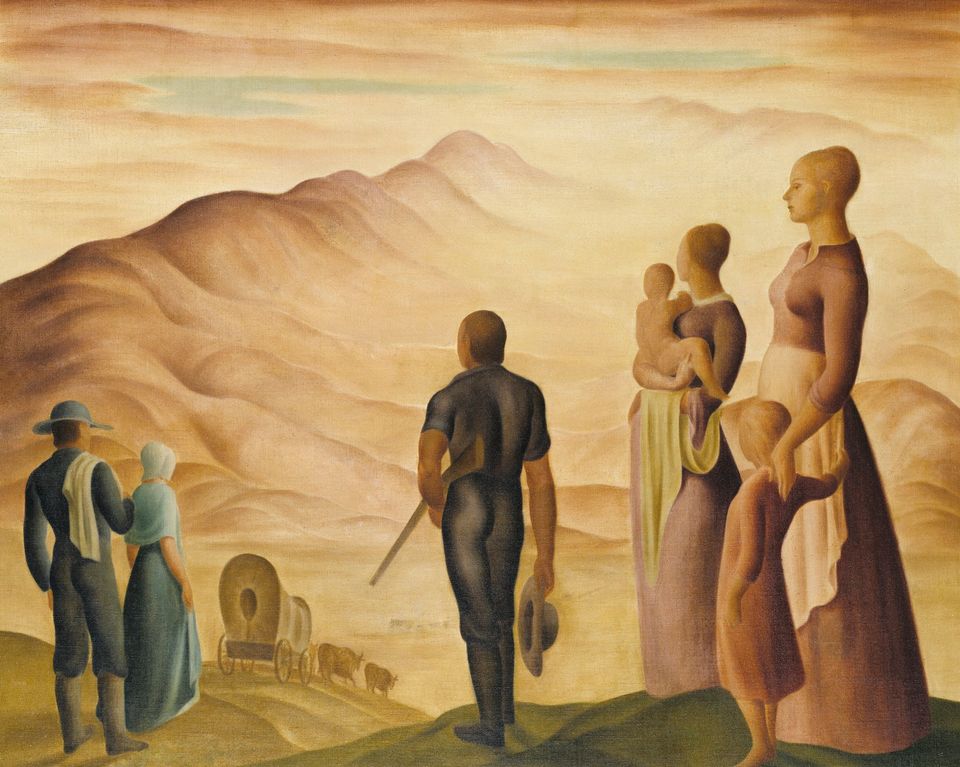

Is it possible for a painting to describe two histories? Take a step back in time to both the Oregon Trail and the Great Depression, both periods of unknown adventure, uncertainty, hard times, perseverance, and optimism. What links these two eras together? The answer is Helen Lundeberg's 1934 painting Pioneers of the West, now on display in the museum's Luce Foundation Center.
Helen Lundeberg was a member of the New Deal's Public Works of Art Project, which aimed to beautify the nation with images of American heritage and everyday life. Attempting to capture a shared heritage, Lundeberg decided to paint an "American scene" that captures the mood of the 1930s within an image of United States history. Unlike many of her colleagues who drew scenes from 1930s life, like Ray Strong's Golden Gate Bridge, Lily Furedi's Subway, and Millard Sheets' Tenement Flats, Lundeberg's mural uniquely describes United States heritage and community as a group of Anglo-Americans families traveling west into the distant Rocky Mountains. Difficult economic times, strength in community and family, and hope for the future are characteristics that define both America's Manifest Destiny, but also the New Deal. Though this image describes a scene from the Oregon Trail, the memory of this challenging time also characterizes the feelings of the Great Depression. Viewers today can look upon the painting like a dream within a dream, or in this case, a history within a history.
Lundeberg's Pioneers of the West painting shows how our present can affect how we look at the past. Just as art can be interpreted in many different ways, so can history. Does this artwork reveal the truth about the past? As a student of history, this is a question that interests me.


















